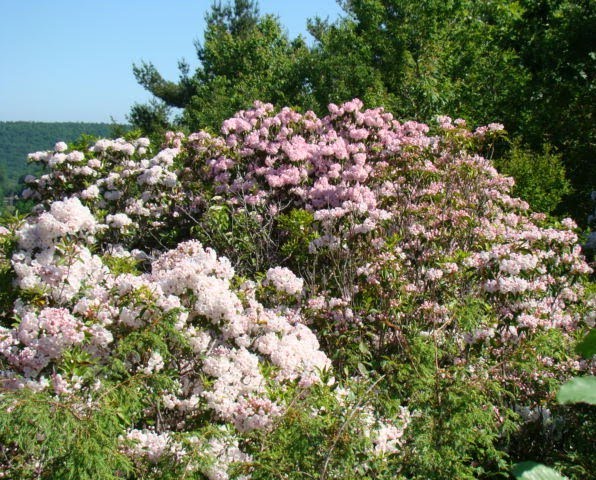
General Information
Japanese Honeysuckle is a twining, vigorous, deciduous vine that is considered an invasive plant in Connecticut due to escaping cultivation since its introduction in the mid-19th Century. It grows more than 30 feet in length in many locations and can kill shrubs and small trees by girdling -- cutting off the water and nutrient supplies -- or blocking out sunlight.
Plant Habit and Form
Japanese Honeysuckle is a climbing, twining vine and can also trail along the ground growing about 2 feet high. It has opposite leaves that are ovate and between 1 1/4 and 3 1/4 inches long. Dark green in summer, the leaves turn bronze or purple in autumn. It has evergreen tendencies in zones warmer than 6.
Growing Requirements
Adaptable to most soil conditions, Japanese Honeysuckle thrives in a wide variety of locations including fields, forests, wetlands, and on fencerows along roads and highways. It can tolerate both drought and wet soils. It is hardy in zones 4 to 10.

Flowering and Fruiting
Tubular flowers are borne in pairs generally in mid-June. They start out white and mature to yellow within a couple days. They are quite fragrant. Small blue-black berries about 1/4 inch long follow the blooms.
Pests and Diseases
Japanese Honeysuckle is rarely bothered by pests and diseases.
ID Tips
Twining, climbing vine or rampant ground cover. Fragrant two-lipped white flowers aging to yellow. Evergreen, semievergreen tendencies in warmer climates.

